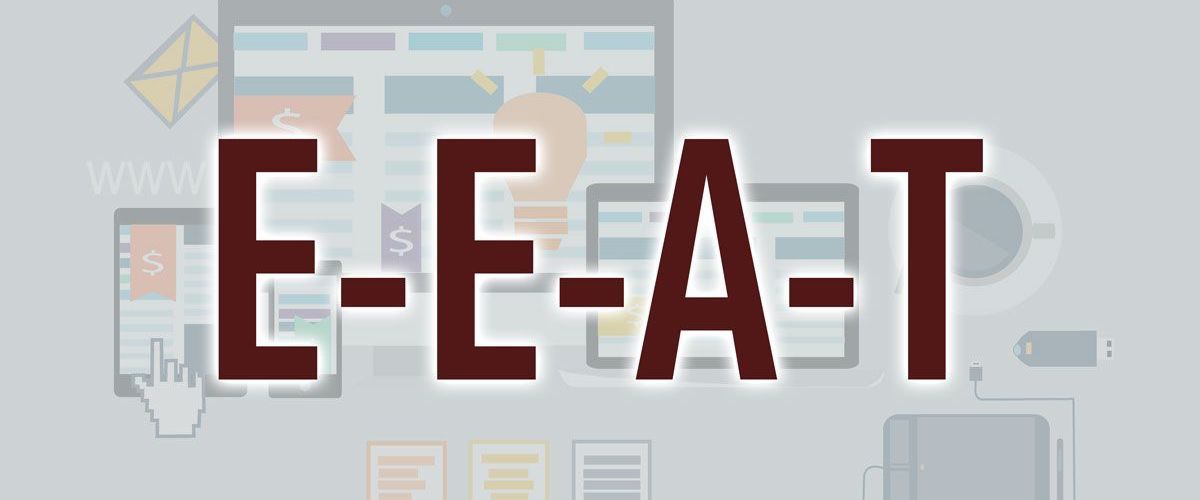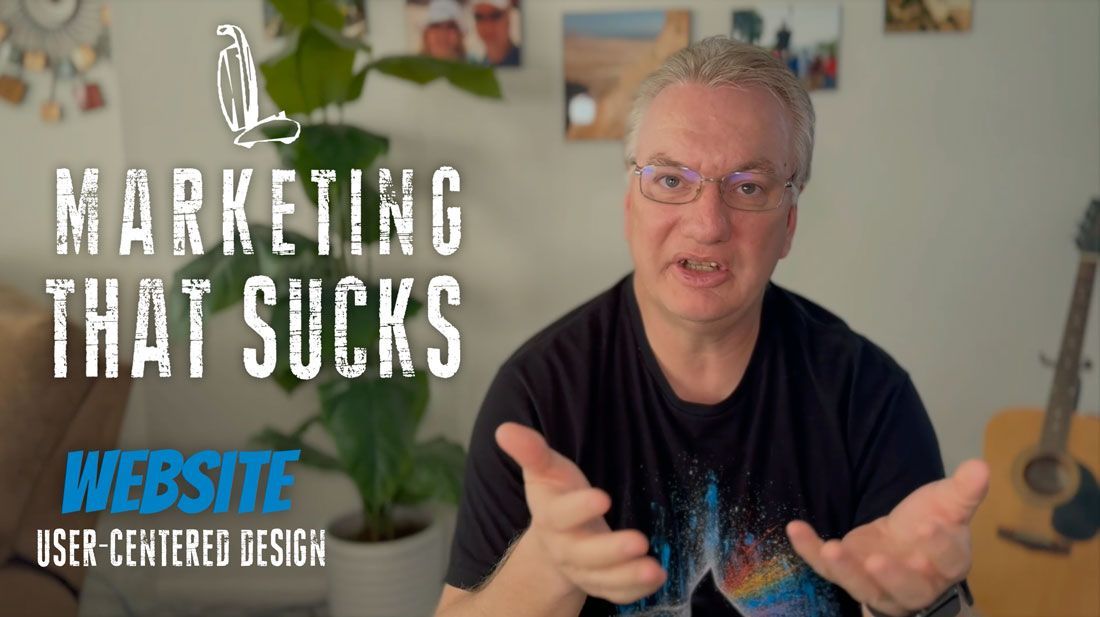Top 7 SEO Trends for 2025 – How Small Businesses Can Adapt and Thrive
The Times They Are A-Changin'
As we look ahead to 2025, the pace of change in search engine optimization (SEO) continues to accelerate. Search engines are becoming more intuitive, artificial intelligence is reshaping how information is served, and customers are discovering businesses through an ever-growing array of devices and channels. If you’re a small business owner, navigating these shifts can seem daunting. That’s why it’s more important than ever to stay informed about the latest SEO developments—and to put these insights into practice.
At Bryt Idea Consulting, we believe in an approach that’s both innovative and practical, helping you make sense of emerging digital marketing trends, seize new opportunities, and strengthen your online presence step by step. In this in-depth post, we’ll explore the top seven SEO trends for 2025 and outline clear, achievable ways small businesses can adapt to stay ahead of the competition. We’ll also share how fractional CMO services can make a difference when it comes to implementing these strategies effectively.
Whether you’re looking to build a stronger local SEO foundation, tap into the power of AI, or refine your content marketing strategy, these insights are designed to guide you. By embracing forward-thinking SEO tactics, you’ll be ready to connect with more customers, increase brand visibility, and elevate your overall digital marketing results.
1. AI-Generated Search Answers and Conversational Queries
Trend Overview:
Artificial intelligence has already begun transforming search results, and by 2025, we’ll see an even stronger emphasis on AI-generated answers. Tools like Google’s “Bard” or Microsoft’s OpenAI integration (e.g., Bing Chat) are using machine learning to parse queries in real time and deliver direct, context-rich responses—often without requiring users to click through to a website. This shift speaks to a broader evolution in how search engines “think.” AI-driven systems can understand the nuances of user intent and provide concise, human-like explanations.
How This Impacts Small Businesses:
In the AI-dominated search landscape, content that straightforwardly answers user questions in a friendly, conversational tone will have the best chance to surface as a top result or “featured snippet.” However, the growth of AI-generated answers can pose a challenge: users may get what they need from the search results page itself, rather than clicking through to read your full article or product page.
How to Adapt:
- Focus on Intent-Driven Content:
Instead of just stuffing keywords into your web pages, prioritize content that directly addresses the needs, pain points, or curiosities of your audience. The more effectively you can align with user intent, the more likely AI systems will highlight your content in a direct answer. - Emphasize “Conversational” Optimization:
AI chatbots and advanced search queries often sound more natural and detailed than the typical keyword-based searches of the past. Think about how customers might phrase a question verbally, and consider adding a well-structured FAQ or Q&A section on your site. These can boost your chances of appearing in featured snippets or AI-driven search responses. - Keep Content Fresh and Accurate:
AI engines are hungry for current, verifiable information. Keep your blog posts, service pages, and product listings updated. Provide references, data points, and examples that demonstrate expertise and trustworthiness. The more “real-world” context you add, the more valuable your content becomes to these AI systems.
Remember that in an AI-first world, building trust and authority is essential. Thorough, well-researched, and clearly structured content is your best bet to appear in those top-tier AI-generated recommendations.

2. The Rise of Voice Search
Trend Overview:
Voice search isn’t new, but it’s set to become even more prominent in the next few years. With the popularity of virtual assistants like Siri, Alexa, and Google Assistant, consumers can simply speak their questions and instantly receive relevant, tailored answers. As voice recognition technology matures, an even broader range of devices—car infotainment systems, smart TVs, wearables—will offer integrated voice features.
How This Impacts Small Businesses:
Voice searches typically involve more “natural” phrases and often carry higher local intent (e.g., “Which coffee shop is open near me?”). This makes voice SEO especially critical if you operate in local markets. Additionally, voice-queried answers usually come from featured snippets or top-ranking results, meaning the competition for that prime real estate will become fiercer.
How to Adapt:
- Incorporate Long-Tail, Conversational Keywords:
Voice queries tend to be more detailed than text-based searches. For instance, someone might type “coffee shops Brooklyn” on their laptop, but voice-search “What’s the best coffee shop in Brooklyn that’s open late?” Update your website copy with relevant “question and answer” structures to capture these longer queries. - Optimize Google Business Profile and Local Listings:
Voice searches often have local intent. Make sure your Google Business Profile is complete, accurate, and up to date with the correct address, phone number, operating hours, and even holiday closures. Encourage customers to leave reviews, as positive ratings can help surface your business in local voice searches. - Featured Snippets and FAQs:
Creating helpful FAQ sections and aiming to rank for featured snippets is crucial if you want to capture that prime “position zero” for voice queries. Provide direct, succinct answers to common questions potential customers might ask.
A robust voice SEO strategy means thinking about how your customers phrase their questions aloud—then delivering the answers in a clear, concise, and helpful way.

3. Zero-Click Results and the Evolving SERP
Trend Overview:
Zero-click results have been on the rise for a while. These are search outcomes that provide all the necessary information directly on Google’s search engine results page (SERP), so users don’t even need to visit a website. Featured snippets, knowledge panels, and instant answers are forms of zero-click results. By 2025, this “instant gratification” approach to information retrieval will be even more pronounced.
How This Impacts Small Businesses:
While zero-click results can help build brand awareness (by placing your company’s content front and center), they also reduce traffic to your website if customers already see what they need. Striking a balance between providing straightforward information and incentivizing users to click is now a key challenge.
How to Adapt:
- Optimize for Featured Snippets – But Offer More:
Featured snippets often pull the most direct or succinct explanation from a page. Include an “executive summary” or quick bullet points for immediate clarity, but also provide deeper context further down. This entices readers to click through and learn more. - Embrace Structured Data Markup:
Using schema markup on your website can help Google and other search engines better understand your content. Mark up business details, events, products, and FAQ sections so search engines can display relevant info directly in search results. Structured data also increases your chances of appearing in rich results. - Create Engaging “Reasons to Click”:
If your quick snippet is displayed, how do you encourage someone to visit your website for more information? Tease unique insights, link to an in-depth resource, or highlight a special offer that isn’t fully detailed in the snippet. This approach balances user satisfaction with your site traffic goals.
Zero-click results show no sign of slowing down. By optimizing for immediate answers while still offering a compelling reason to visit your site, you can turn these trends into opportunities to build trust and drive conversions.
Looking for a Trusted Marketing Advisor?
Reach out today for a complimentary consultation! Discover how Bryt•Idea can help grow your business!

4. Continued Emphasis on E-E-A-T (Experience, Expertise, Authoritativeness, Trustworthiness)
Trend Overview:
What began as
Google’s E-A-T principle (Expertise, Authoritativeness, Trustworthiness) has evolved into E-E-A-T, with the inclusion of Experience. By 2025, search engines will have even more sophisticated algorithms to gauge the authenticity and credibility of your content. Google wants to ensure that real experts (ideally those with first-hand experience) are creating content, rather than unknown or low-quality contributors.
How This Impacts Small Businesses:
Small businesses gain an edge if they can demonstrate genuine experience with their subject matter. If you’re a local bakery writing about gluten-free recipes, showcasing your actual expertise as a baker with years of hands-on experience is invaluable. If you’re offering fractional CMO services, highlighting your track record of strategic marketing wins can reassure potential clients—and help you stand out in SERPs.
How to Adapt:
- Showcase Real-World Experience:
Elevate the voices of actual practitioners, founders, or team members who have the hands-on experience. Use bylines and author bios that highlight qualifications, years of experience, or relevant awards. - Develop High-Quality, Fact-Based Content:
Use credible data, studies, and reputable sources. Whenever possible, link to evidence or reliable third-party endorsements. This helps Google understand that your business is rooted in real expertise and industry know-how. - Encourage Genuine Feedback:
Customer reviews, testimonials, case studies, and success stories all contribute to your authority. Prompt customers to share their experiences—especially if they highlight your expertise in delivering solutions. - Maintain Transparency and Authenticity:
Foster trust by being transparent about your practices, from product sourcing to service pricing. If you’re a marketing consultant for small businesses, for example, outline exactly how your consulting process works and how you measure results.
When search engines see that your brand consistently provides experienced, insightful content, they’ll be more inclined to boost your visibility, especially in competitive niches.
5. The Growing Importance of Core Web Vitals and Page Experience
Trend Overview:
Core Web Vitals—metrics that measure page speed, responsiveness, and visual stability—remain a pivotal SEO factor. By 2025, search engines will prioritize websites that deliver not just fast load times, but also smooth, user-friendly experiences across all devices. This emphasis on page experience means small businesses must focus on technical performance just as much as compelling content.
How This Impacts Small Businesses:
If your website loads slowly or is riddled with distracting layout shifts, customers may bounce before they ever read your message. This not only hurts conversions but can negatively impact your search rankings. The good news is that optimizing for Core Web Vitals often goes hand in hand with better user satisfaction.
How to Adapt:
- Optimize Page Speed:
Compress images, leverage caching, and minimize the use of heavy scripts or plug-ins. Keep your code clean and rely on a reliable hosting provider. Tools like Google PageSpeed Insights, GTmetrix, or Lighthouse can help identify problem areas. - Enable a Responsive Design:
More people are browsing on their mobile devices, and that trend will continue. Use responsive design principles to ensure your website looks and works great on any screen size. If a visitor encounters difficulty on their smartphone, they’ll likely move on to a competitor’s site. - Prevent Layout Shifts:
Major layout shifts can be frustrating. Pay attention to image dimensions, ad placements, and dynamic content to make sure elements don’t unexpectedly move around when a page is loading. - Boost Security and Stability:
An HTTPS (secure) website can help build trust with both users and search engines. Consistent uptime and minimal server errors also bolster your site’s reputation.
A quick-loading, visually stable website that feels good to browse increases dwell time, encourages sharing, and sends signals to Google that your business is worth displaying in top search results.
6. Data Privacy, Consent, and User Trust
Trend Overview:
As privacy regulations tighten worldwide, search engines may further reward sites that handle user data responsibly. Ongoing changes like the phasing out of third-party cookies and the implementation of stricter consent requirements mean digital marketers must be more transparent about how they collect and use consumer data. By 2025, respecting user privacy and consent is no longer optional—it’s an essential part of SEO and overall brand trust.
How This Impacts Small Businesses:
If you rely on user data for remarketing or personalized campaigns, you must clearly communicate how you’re gathering and storing information—and secure explicit consent when needed. Violations can lead to fines or legal trouble, but even minor missteps can erode trust.
How to Adapt:
- Implement a Clear Privacy Policy and Consent Strategy:
Ensure your website offers an easy-to-understand privacy policy that outlines what data is collected and why. If you use cookies or tracking pixels, provide an opt-in or opt-out feature that’s both visible and straightforward. - Respect User Preferences:
Use analytics platforms that allow for privacy-friendly data collection or anonymize user information. Keeping user data safe and private helps maintain a trustworthy reputation and aligns with emerging regulations. - Build Trust Through Transparency:
Talk openly about your commitment to data protection. Share how you keep customer information secure (e.g., SSL encryption, limited access to databases, etc.). This transparency fosters loyalty in an environment where consumers are more cautious about sharing their data.
A strong privacy approach not only keeps you compliant but also supports brand loyalty. When people see you value their data and respect their preferences, they’re more likely to stay engaged with your content and offerings.
Looking for a Trusted Marketing Advisor?
Reach out today for a complimentary consultation! Discover how Bryt•Idea can help grow your business!

7. Local SEO 2.0: Personalization, Proximity, and Beyond
Trend Overview:
For many small businesses, local customers are the lifeblood of growth. By 2025, local SEO is set to become more personalized and precise, with search engines factoring in user preferences, past search behavior, and real-time location data. This means a user a few blocks away might see different results than someone even slightly further out.
How This Impacts Small Businesses:
A hyper-local approach means you can become the go-to brand for neighborhood residents. However, standing out requires more than adding your address to a directory. You need to actively optimize your website content, manage your local listings, collect positive reviews, and demonstrate relevance to your specific community.
How to Adapt:
- Refine Your Google Business Profile:
This is the first impression many local customers see when searching. Upload high-quality photos of your storefront, services, and team. Keep your business hours accurate, share special events or promotions, and encourage reviews from satisfied customers. - Incorporate Localized Content:
Instead of generic blog posts, create content that speaks to your community’s needs. If you run a fitness center, for instance, share posts about local running trails or healthy dining options in your city. This shows search engines you’re deeply connected to the area. - Leverage Local Citations and Directories:
From Yelp to niche industry directories, consistent name, address, and phone number (NAP) information boosts your local credibility. Respond promptly to reviews (positive or negative) to show engagement and customer care. - Optimize for “Near Me” Searches:
Include localized keywords in your pages, such as “Italian restaurant in [Neighborhood Name]” or “best marketing consultants for small businesses in [City].” People often phrase queries this way when searching from a mobile device.
Local SEO can be a huge driver of foot traffic and conversions for brick-and-mortar and service-based businesses alike. By staying visible in local search, you’ll connect with customers right as they need your offerings.
Harnessing These Trends: Practical Next Steps
Now that we’ve explored the top seven SEO trends poised to shape 2025—AI-driven answers, voice search, zero-click results, E-E-A-T, Core Web Vitals, data privacy, and local SEO—where do you start?
- Audit Your Existing Content:
Check if your website’s content is up to date, relevant, and aligned with the needs of your audience. Look for opportunities to add or refine sections that might answer common search queries more directly, especially for voice searches and potential zero-click features. - Improve Technical Performance:
Don’t let slow load times or poor mobile responsiveness drive away potential customers. Optimize images, streamline plugins, and consider upgrading your hosting environment. These behind-the-scenes actions can make a tangible difference in both user satisfaction and SEO rankings. - Emphasize Credibility and Experience:
If you’re selling fractional CMO services, highlight your proven track record in helping small businesses achieve growth. If you’re offering marketing consultants for small businesses, showcase real-life case studies, testimonials, or thought leadership pieces. This fosters trust, which is critical to E-E-A-T principles. - Stay Current with Regulations:
Privacy and data protection should be more than an afterthought. Implement straightforward opt-in strategies for cookie usage or email list sign-ups, and keep your privacy policy transparent and user-friendly. - Localize Your SEO Efforts:
Even if you serve a broader market, local SEO can provide a firm foundation—especially if you have a physical location or specific local services. Encourage reviews, keep local directories updated, and create location-based content that resonates with your target audience. - Consider Professional Guidance:
With so many evolving factors, partnering with a professional SEO or digital marketing consultant can help you cut through the noise. Marketing consultants for small businesses offer expertise grounded in real-world results. Likewise, fractional CMO services can provide strategic leadership without the cost of a full-time executive hire, ensuring you’re making the right moves at the right time.
Keep Your Momentum Going
SEO is far more than a game of guessing the next algorithm update. It’s about building a sustainable, long-term relationship with your audience. By embracing these emerging trends, you’re better equipped to provide real value—serving up exactly what your customers are looking for, exactly when they need it.
One essential piece of advice is to stay curious. The digital landscape is always shifting, and the small business owners who benefit most are those who adapt their strategies as they learn. Whether that means tweaking content to answer new voice search phrases, refining your local listings, or adopting fresh AI-driven solutions, a proactive mindset fuels growth.
Remember: SEO success in 2025 and beyond doesn’t require you to master every new trick overnight. Focus on consistent, meaningful improvements that play to your strengths. Highlight your unique expertise, deliver great user experiences, and respect your audience’s time and privacy. By doing so, you not only rank better—you build a brand that customers trust and return to for the long run.
How Bryt Idea Consulting Can Help
At Bryt Idea Consulting, we specialize in guiding small businesses through the constantly evolving world of digital marketing. Whether you need help optimizing for voice search, refining your local SEO, or exploring fractional CMO services, we’re here to craft a personalized strategy tailored to your goals. Contact us today for a free consultation and see how our innovative yet practical approach can help your business thrive in 2025 and beyond. We look forward to partnering with you on your journey to sustainable, long-term growth.









